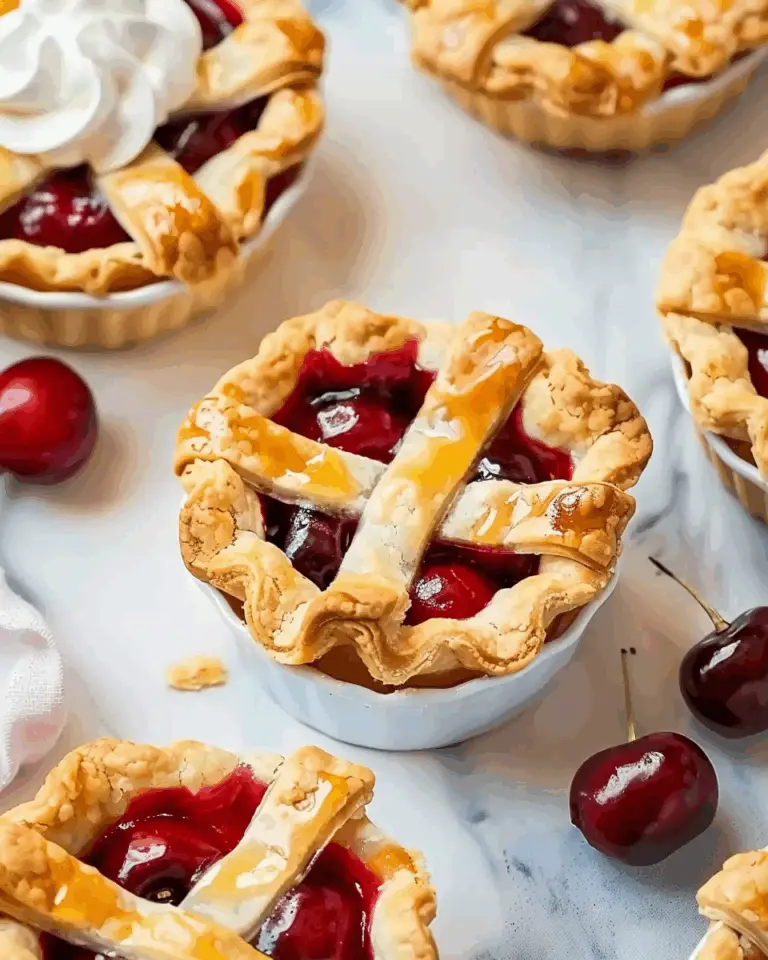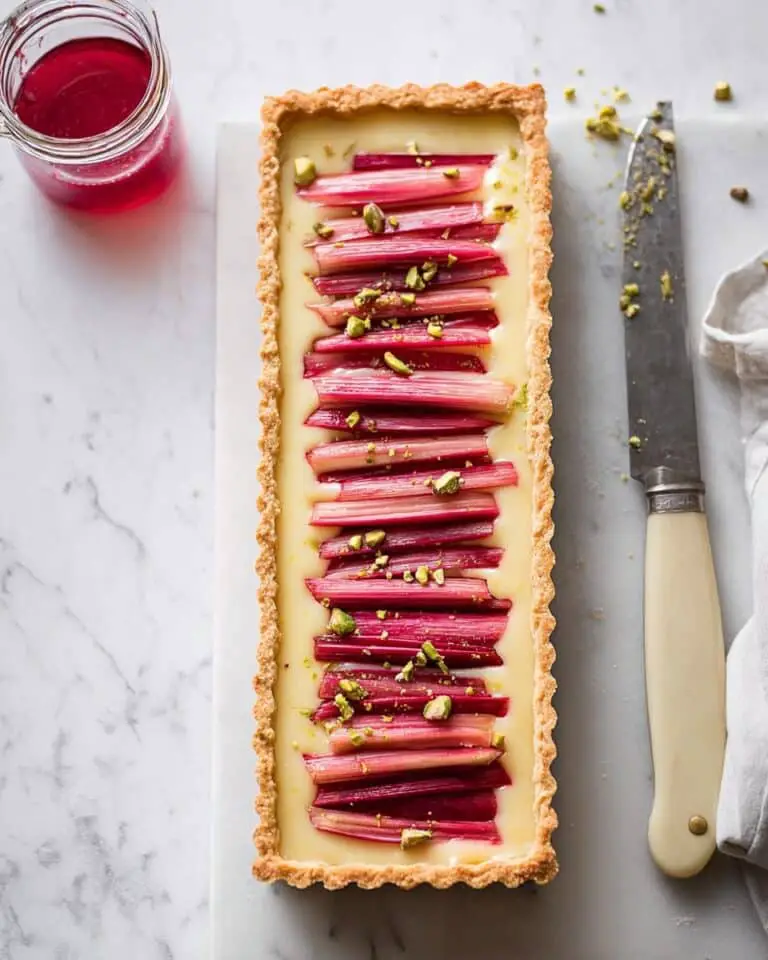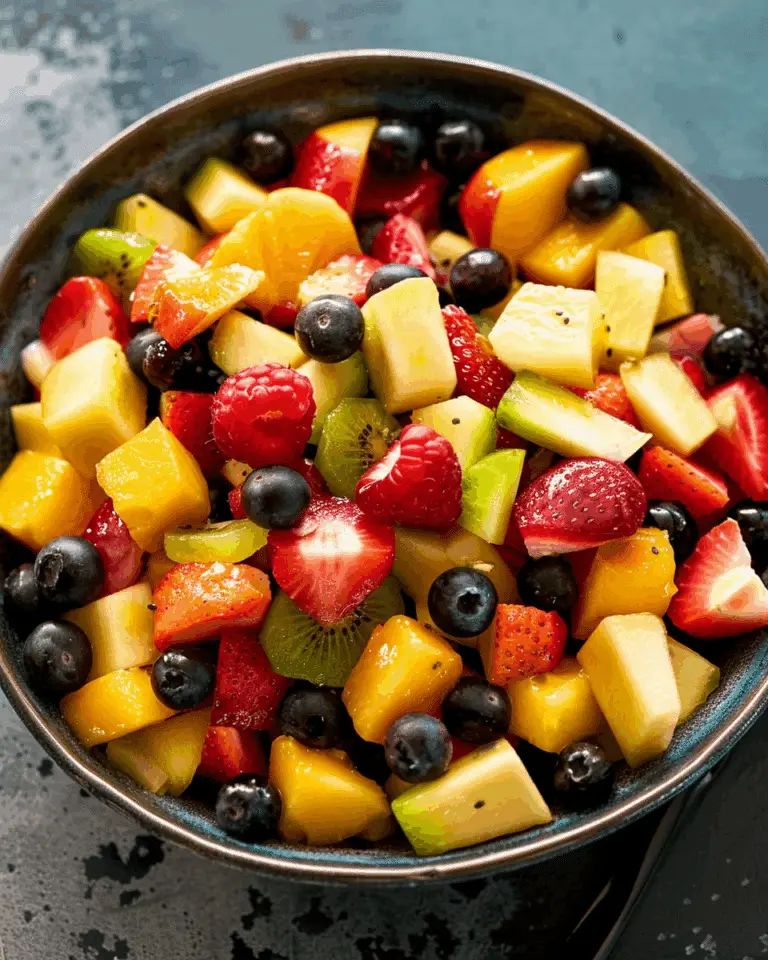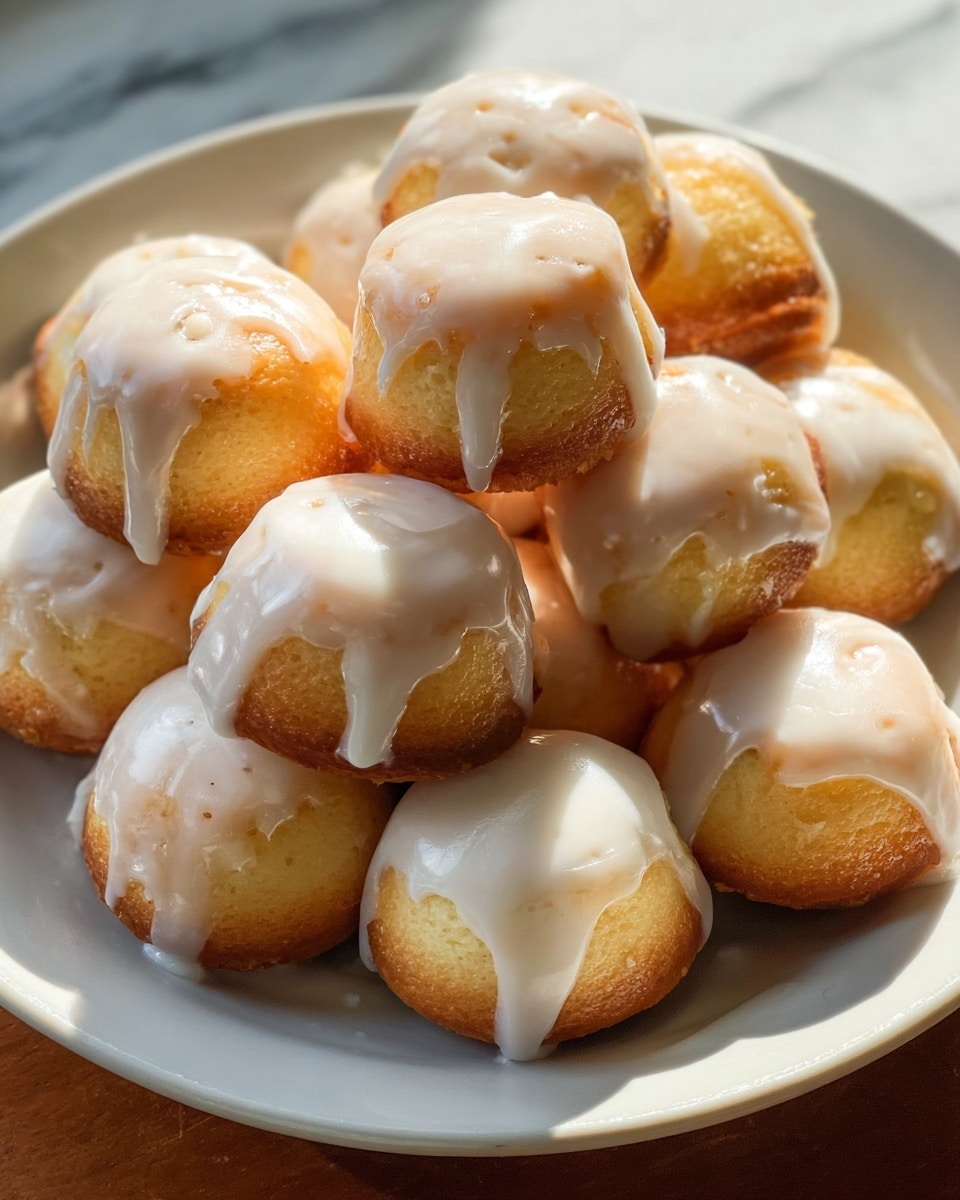
If you’re craving a bright, tangy treat that’s just the right size for popping straight into your mouth, this Glazed Lemon Donut Holes Recipe is about to become your new obsession. Bursting with fresh lemon flavor and topped with a luscious cream cheese glaze, these donut holes are light, perfectly sweet, and impossibly addictive. They’re a wonderful twist on a classic, combining the zing of lemon with a melt-in-your-mouth texture that will brighten any snack time or gathering.
Ingredients You’ll Need
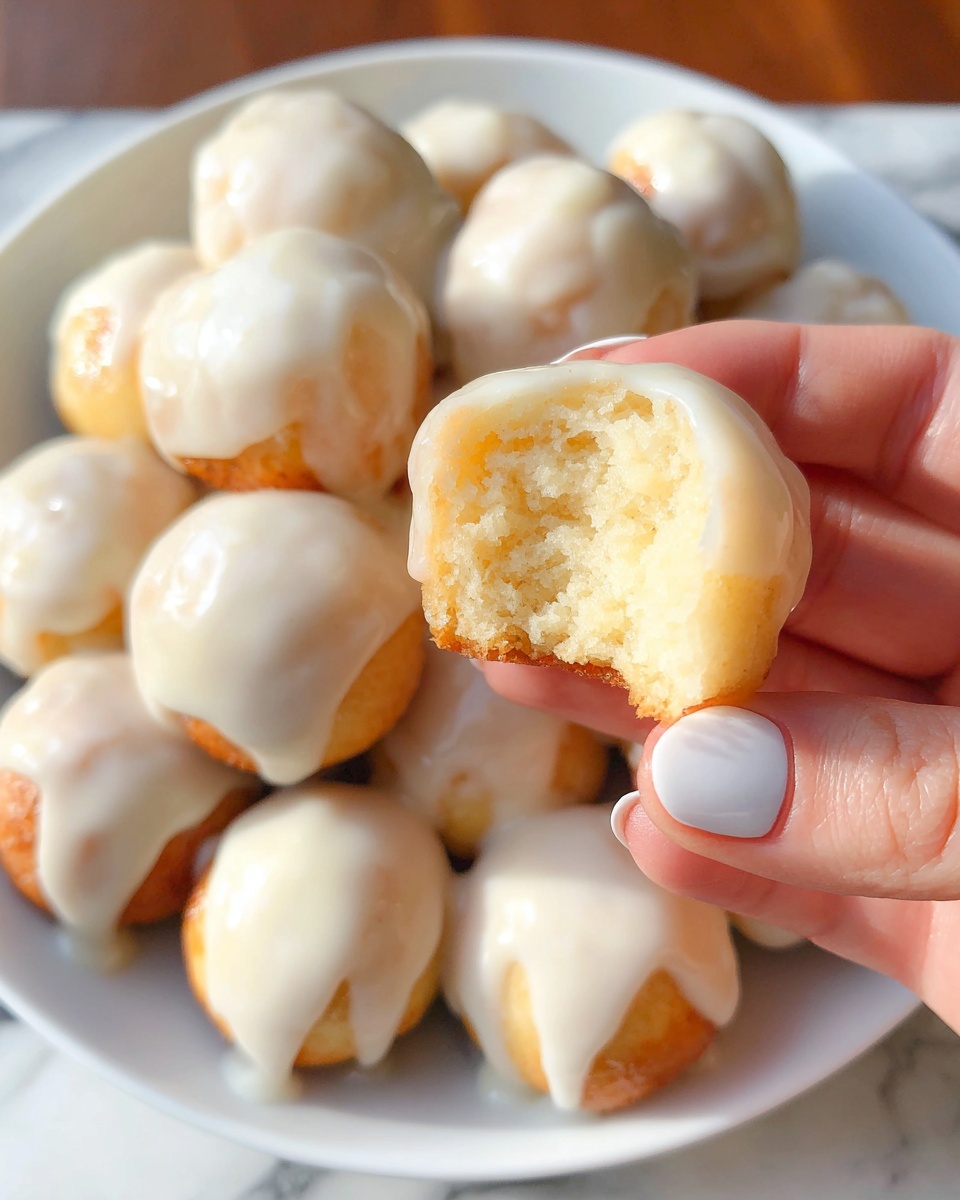
These ingredients are refreshingly simple but each plays a starring role in creating the deliciousness of this recipe. From the citrusy punch of lemon juice to the creamy tenderness of butter and cream cheese, every component works together to achieve that perfect balance of flavor and texture.
- Milk (1 cup): Whether you use regular or plant-based, milk adds moisture, helping the batter turn out tender.
- Lemon juice (1/2 cup): Fresh or bottled, this brings the unmistakable zesty brightness that makes these donut holes special.
- Melted butter (1/4 cup): Adds richness which keeps the donut holes tender and flavorful.
- Sugar (1 cup): Sweetens the batter just right without overpowering the lemon.
- Baking powder (1 1/2 tsp): Helps the donut holes puff up light and fluffy.
- Baking soda (1 tsp): Works hand-in-hand with the lemon for a perfect rise and texture.
- Lemon extract (1 tsp, optional): An extra lemon punch if you want the flavor to really pop.
- All-purpose flour (2 cups): Use regular or gluten-free to give structure to your donut holes.
- Powdered sugar (3/4 cup): The base for the luscious cream cheese glaze coating your donut holes.
- Melted butter (2 tbsp): Adds a silky richness to the glaze making it smooth and decadent.
- Cream cheese (2 oz): Brings creamy tang to the glaze, perfectly complementing the lemon.
How to Make Glazed Lemon Donut Holes Recipe
Step 1: Prepare Your Oven and Donut Molds
Start by heating your oven to 350 degrees Fahrenheit. It’s important to make sure the silicone donut hole molds are greased well with non-stick spray; this ensures your donut holes come out effortlessly once baked, maintaining their perfect little round shape.
Step 2: Mix the Wet Ingredients
Combine the milk, lemon juice, melted butter, sugar, and optional lemon extract in a bowl. This is where the magic begins — the ingredients marry to create that fresh, citrusy base that will shine through every bite. Stir them gently but thoroughly until the sugar is mostly dissolved.
Step 3: Add the Leavening Agents
Sprinkle in the baking powder and baking soda; you’ll notice the mixture starts to fizz as the acids react with the bases. That fizz is your indication that your donut holes will be delightfully light and airy. Quickly proceed to add the flour so you capture that lift.
Step 4: Incorporate the Flour for a Smooth Batter
Add in the all-purpose flour all at once and mix until the batter is smooth. Don’t overmix here — just enough to combine everything into a thick, lemony batter. The texture should be velvety and pourable but not runny.
Step 5: Fill the Donut Molds and Bake
Pour the batter evenly into your silicone donut hole molds. You should have enough to fill about 50 molds, making this recipe perfect for parties or sharing. Place them in the oven and bake for 20 to 25 minutes until they spring back lightly when touched and are cooked through.
Step 6: Prepare the Cream Cheese Glaze
While your lemon donut holes cool, whisk together the powdered sugar, melted butter, and cream cheese. If the glaze feels a bit thick for drizzling, stir in a tablespoon of milk (regular or plant-based) to achieve the perfect dripping consistency that’ll beautifully coat each donut hole.
Step 7: Glaze and Enjoy
Once the donut holes are cool enough to handle, drizzle the cream cheese glaze all over them generously. This finishing touch adds creaminess and sweetness that makes these bite-sized treats utterly irresistible.
How to Serve Glazed Lemon Donut Holes Recipe
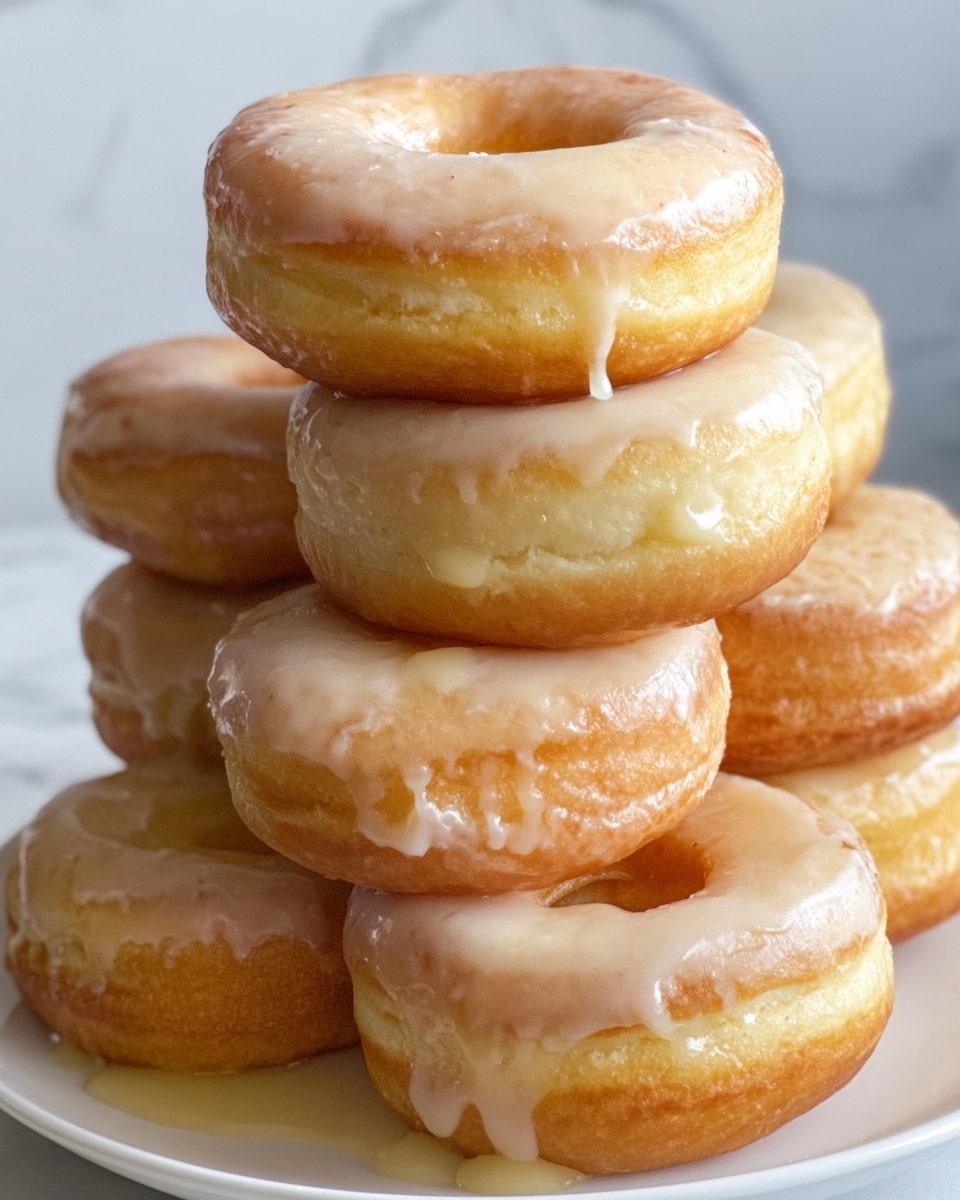
Garnishes
For an extra special touch, consider sprinkling some finely grated lemon zest over the glaze as it sets. A light dusting of powdered sugar or a few edible flowers can turn your donut holes into a charming centerpiece. These little details make your presentation look effortlessly elevated and inviting.
Side Dishes
These donut holes pair wonderfully with a cup of hot tea or freshly brewed coffee, making for a perfect snack break. For brunch, serve alongside fresh berries or a dollop of Greek yogurt. Their bright lemon flavor and sweetness complement creamy or fruity sides superbly.
Creative Ways to Present
Try stacking your glazed lemon donut holes on a tiered cake stand for a lovely visual display if you’re hosting friends. You can also thread them onto bamboo skewers with small berries in between for fun, handheld treats. Arranged in a decorative bowl or on a rustic wooden board, they become the perfect party snack that everyone will want to grab.
Make Ahead and Storage
Storing Leftovers
Keep leftover glazed lemon donut holes in an airtight container at room temperature for up to two days to maintain their soft texture. If your kitchen tends to be warm, storing them in the refrigerator is fine but allow them to come to room temperature before serving to bring back their tender crumb.
Freezing
These donut holes freeze beautifully! Place them in a single layer on a baking sheet to freeze individually, then transfer to a freezer-safe container or bag. They’ll keep for up to three months. Freeze without glaze for better texture, then glaze freshly after thawing.
Reheating
To warm up frozen donut holes, simply let them thaw at room temperature, then pop them in a 300°F oven for about 5-7 minutes to refresh their softness. Avoid microwaving as it may make them rubbery. After warming, add the glaze and enjoy them like fresh-baked.
FAQs
Can I make this recipe dairy-free?
Absolutely! By substituting plant-based milk, butter, and cream cheese alternatives, you can create a delicious dairy-free version of this Glazed Lemon Donut Holes Recipe without sacrificing any flavor or texture.
How many donut holes does this recipe make?
This recipe yields about 50 donut holes, making it great for large gatherings or to have plenty of treats to share with family and friends.
Can I use fresh lemon zest in the batter?
Yes, adding a teaspoon of fresh lemon zest to the batter will intensify the citrus flavor even more, giving your donut holes an extra zing of freshness.
Is it necessary to use lemon extract?
Lemon extract is optional, but it really amps up that lemony aroma and flavor. If you love lemon, it’s worth including, but the recipe is fantastic even without it.
What’s the best way to glaze the donut holes?
Using a spoon or a small whisk, drizzle the glaze over each cooled donut hole, or dip the tops directly into the glaze for a thicker coating. You want the glaze to just cling to the surface without soaking in completely.
Final Thoughts
I truly hope you give this Glazed Lemon Donut Holes Recipe a try soon because they have a way of brightening your day with every bite. They’re simple to make, irresistibly tasty, and perfect for sharing with anyone who appreciates a sweet, tangy treat. Once you taste that fresh lemon paired with a creamy glaze, these little bites will find a permanent spot in your recipe rotation.
Print
Glazed Lemon Donut Holes Recipe
- Total Time: 30-35 minutes
- Yield: 50 donut holes
- Diet: Gluten Free
Description
These Glazed Lemon Donut Holes are bite-sized, moist, and bursting with fresh lemon flavor. Perfectly baked to a golden finish and topped with a creamy lemon glaze, they make an irresistible treat for any occasion. This recipe yields 50 donut holes, ideal for sharing or party platters.
Ingredients
Donut Holes Batter
- 1 cup milk (regular or plant-based)
- 1/2 cup freshly squeezed or bottled lemon juice
- 1/4 cup melted butter (regular or plant-based)
- 1 cup sugar
- 1 1/2 tsp baking powder
- 1 tsp baking soda
- 1 tsp lemon extract (optional)
- 2 cups regular or gluten-free all purpose flour
Lemon Glaze
- 3/4 cup powdered sugar
- 2 tbsp melted butter (regular or plant-based)
- 2 oz cream cheese (regular or plant-based)
- 1 tbsp regular or plant-based milk (optional, to thin glaze)
Instructions
- Prepare the Oven and Molds: Preheat your oven to 350°F (175°C). Lightly grease silicone donut hole molds with non-stick spray to ensure easy removal of the donut holes after baking.
- Mix Wet Ingredients and Leavening Agents: In a mixing bowl, combine the milk, lemon juice, melted butter, sugar, and lemon extract if using. Stir them together. Next, add the baking powder and baking soda. The mixture will fizz, which indicates the activation of the leavening agents.
- Add Flour to Form Batter: Quickly add the flour to the wet mixture and mix until you achieve a smooth lemon-flavored batter without lumps. Work quickly to incorporate before the fizzing subsides.
- Fill Molds and Bake: Pour the batter evenly into the prepared silicone donut hole molds. You should fill about 50 molds from this batter. Place them in the oven and bake for 20 to 25 minutes, or until the donut holes are cooked through and golden on top.
- Make the Lemon Glaze: While the donut holes cool, whisk together powdered sugar, melted butter, and cream cheese using a hand mixer or whisk until creamy and smooth. If the glaze is too thick for drizzling, add 1 tablespoon of milk and mix again to thin it out.
- Glaze and Serve: Drizzle the lemon glaze over the cooled donut holes. Serve immediately or store in an airtight container for later enjoyment.
Notes
- You can substitute plant-based milk and butter to make this recipe dairy-free.
- Ensure the donut holes are cooled completely before glazing to avoid melting the glaze.
- If you prefer a more intense lemon flavor, add extra lemon zest to the batter.
- The glaze can be thickened by chilling for a few minutes if needed before drizzling.
- Use gluten-free flour to accommodate gluten sensitivities without altering the taste significantly.
- Store donut holes in an airtight container at room temperature for up to 2 days.
- Prep Time: 10 minutes
- Cook Time: 20-25 minutes
- Category: Dessert, Snack, Breakfast
- Method: Baking
- Cuisine: American


